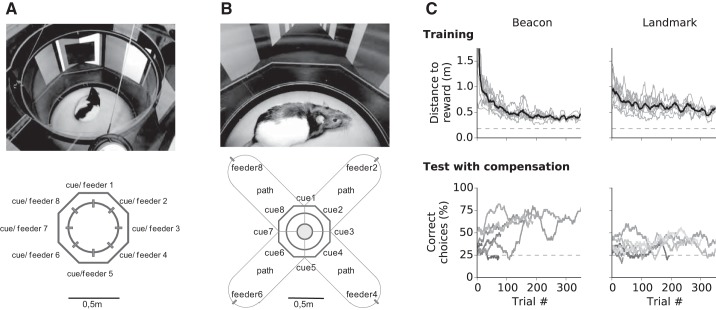Fig. 6.
Navigation with visual cues. Experimental design during training initially performed within the 49-cm arena without compensation (A) and during tests in a 4-arm radial maze (B) with 1-m arms and active compensation. C: during beacon experiments (left), the cue “hovered” in mid-air above the entry of an alley (cues 2, 4, 6, and 8); during landmark experiments, the landmark was located on the wall to the left of the correct alley (cues 1, 3, 5, and 7). The results from the beacon (left) and landmark (right) experiments show the progressive reduction in locomotion distance to reward during task acquisition (top) in the 49-cm arena and the performance during tests in treadmill mode in the four-arm radial maze (bottom). Individual data are in gray (a 50-trial moving average) and group means are in black. Note advanced liquid dispensers in A. Top left: n = 8; bottom left: n = 7; top right: n = 9; bottom right: n = 7. Dashed lines in C show minimum distance (top) and level for chance performance (bottom).

